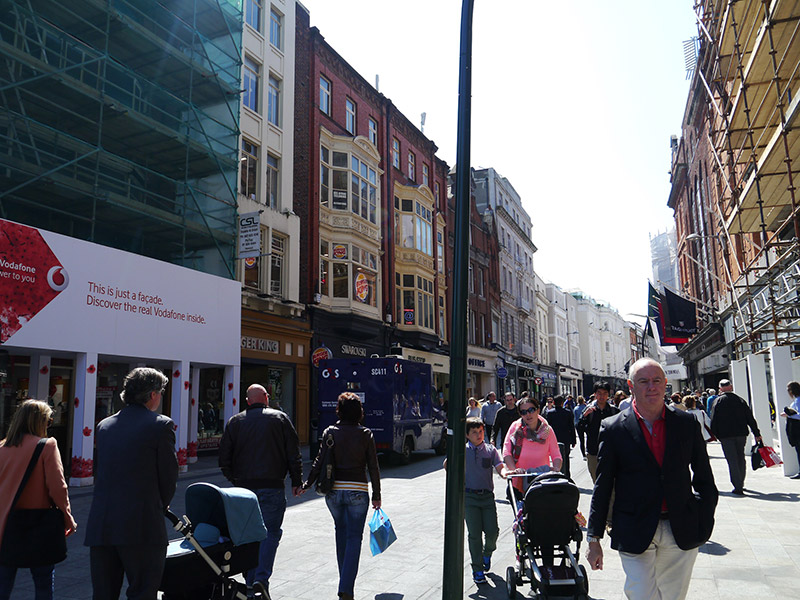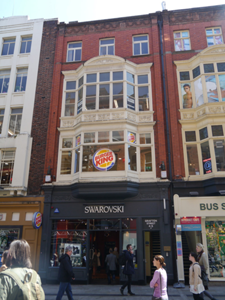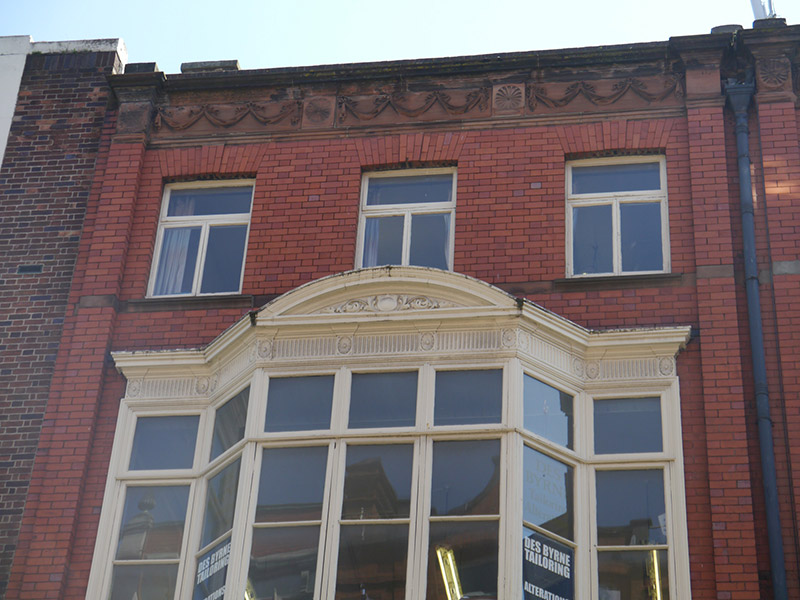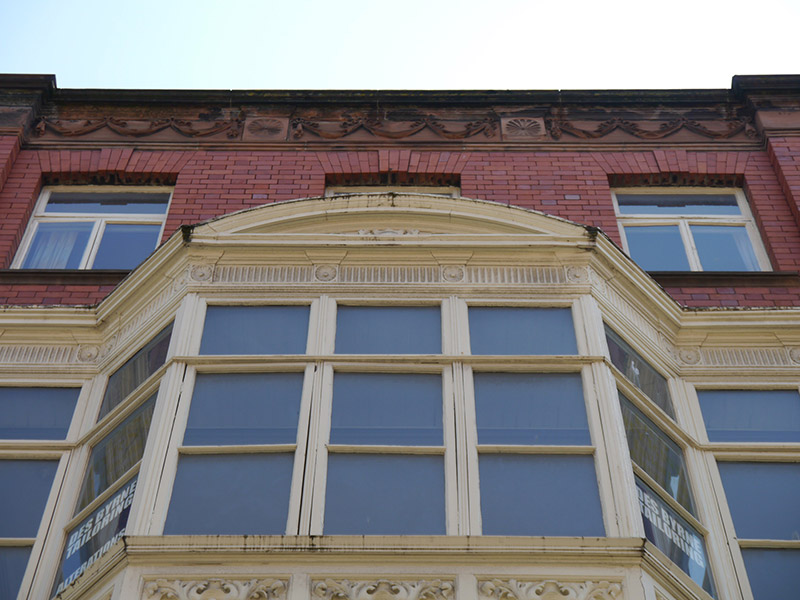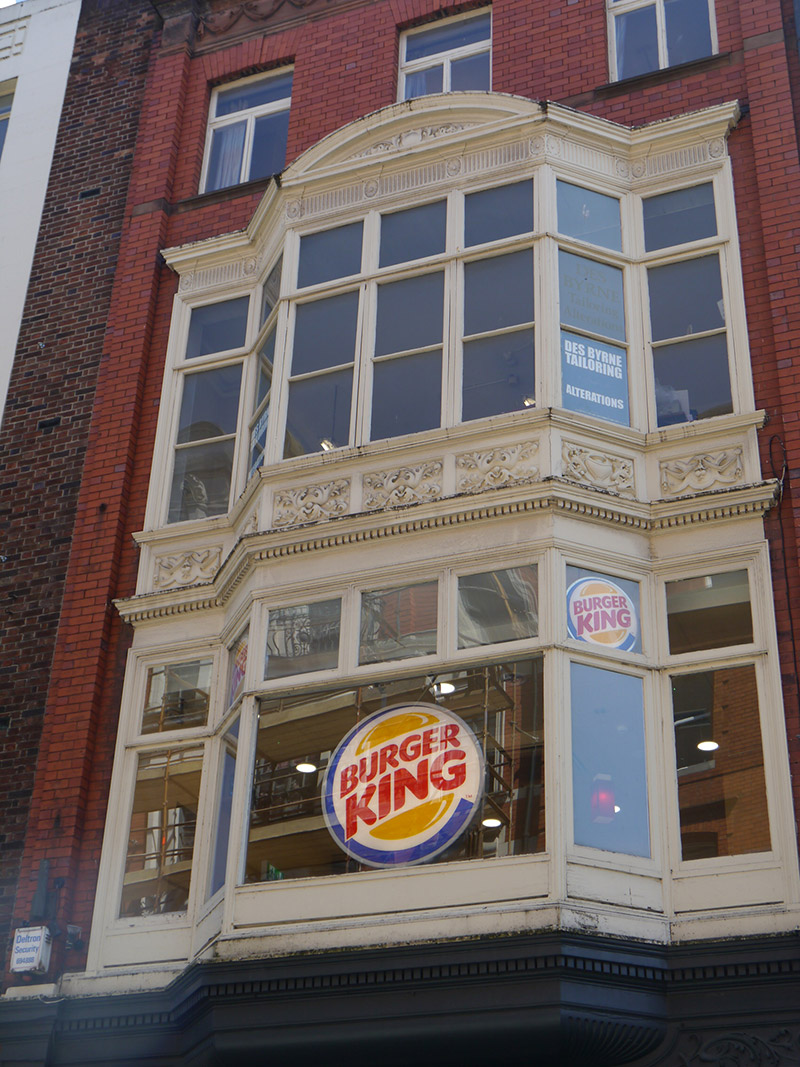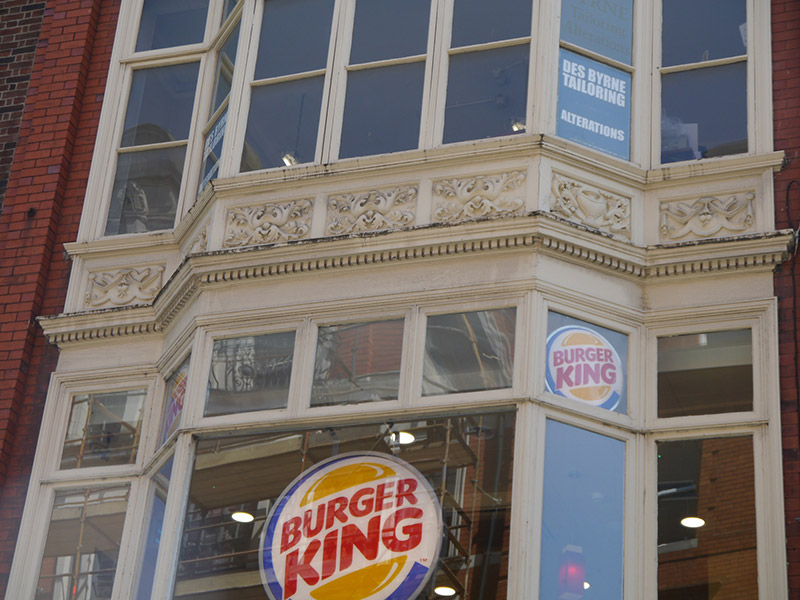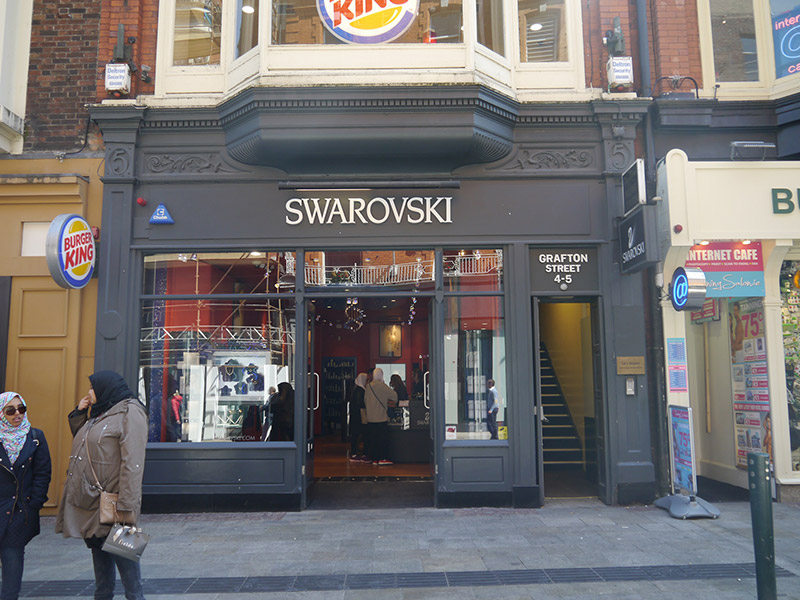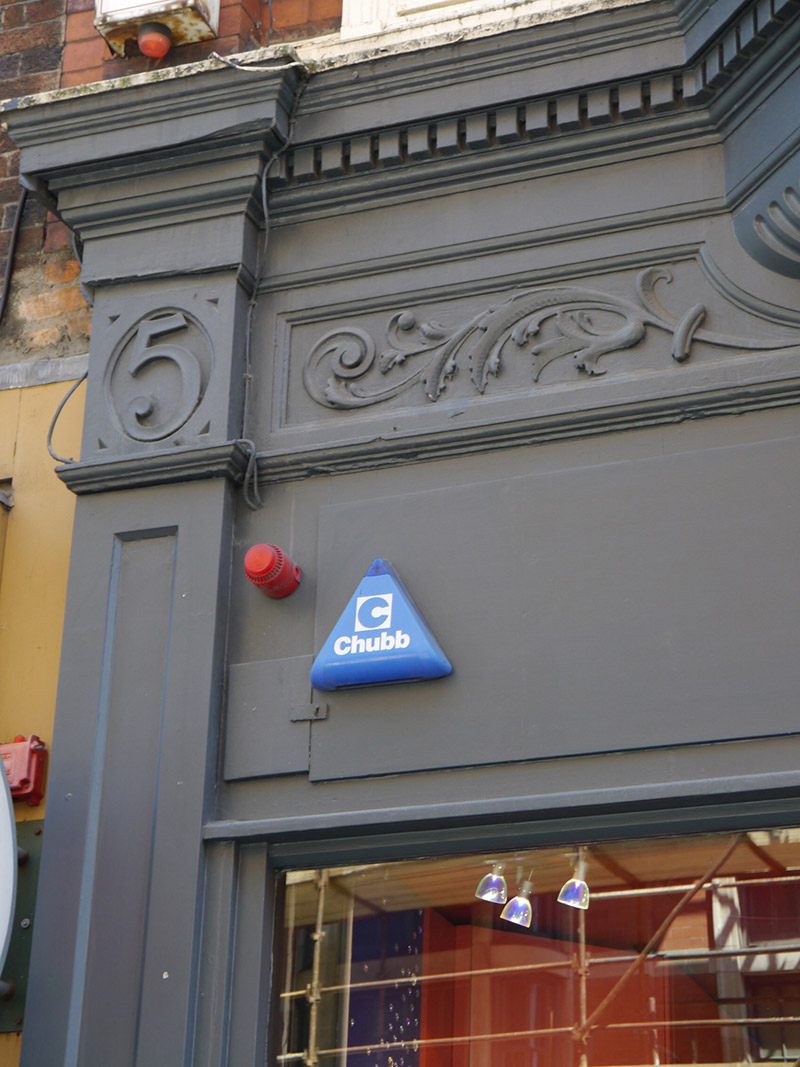Survey Data
Reg No
50100005
Rating
Regional
Categories of Special Interest
Architectural, Artistic
Original Use
Shop/retail outlet
In Use As
Shop/retail outlet
Date
1880 - 1900
Coordinates
315986, 233907
Date Recorded
28/07/2016
Date Updated
--/--/--
Description
Attached three-bay four-storey commercial building, built c. 1890 as one of unequal pair, rear having full-height projection to south end and single-storey addition to north. Hipped slate roof, concealed by red sandstone parapet with moulded cornice and frieze detailed with swags and panels and paterae. Concealed rainwater goods. Flemish bond orange brick walling, having giant pilasters to sides. Square-headed openings to top floor with plain brick reveals, slightly projecting key blocks, and flush sandstone sills; first and second floors lit by full-width double-height glazed oriel corbelled out from shopfront fascia, with original glazing configuration retained to second floor and comprising mullion-and-transom multiple-pane timber-framed casement window with canted central section, decorative apron panels, fluted frieze with roundels, topped by cornice and segmental pediment; first floor altered, but upper panes retained, and having dentillated cornice. Original shopfront retained in part, having panelled pilasters to sides with '5' incised within oval panel to each side of decorative fascia, latter having dentil moulding, deep, plain fascia with recent lettering affixed, timber-framed display windows, chamfered frame, top-lights, and recent panelled stall-riser. Recent door serving upper floors.
Appraisal
No. 5 Grafton Street forms one of a lively pair of late nineteenth-century commercial buildings, characterized by a blend of sandstone and vibrant orange brick and enlivened by a curious blend of neo-Classical ornamental devices. On the basis of its design it is probably by architect L.A. McDonnell, to whom No. 6 is certainly attributed. It has suffered from the loss of part of the original stacked oriel, its principal feature, although - unlike its neighbour - it retains elements of the original shopfront. The building contributes to the architectural vitality and eclecticism of Grafton Street, which was largely developed in the nineteenth century and is celebrated as Dublin's premier retail street.
